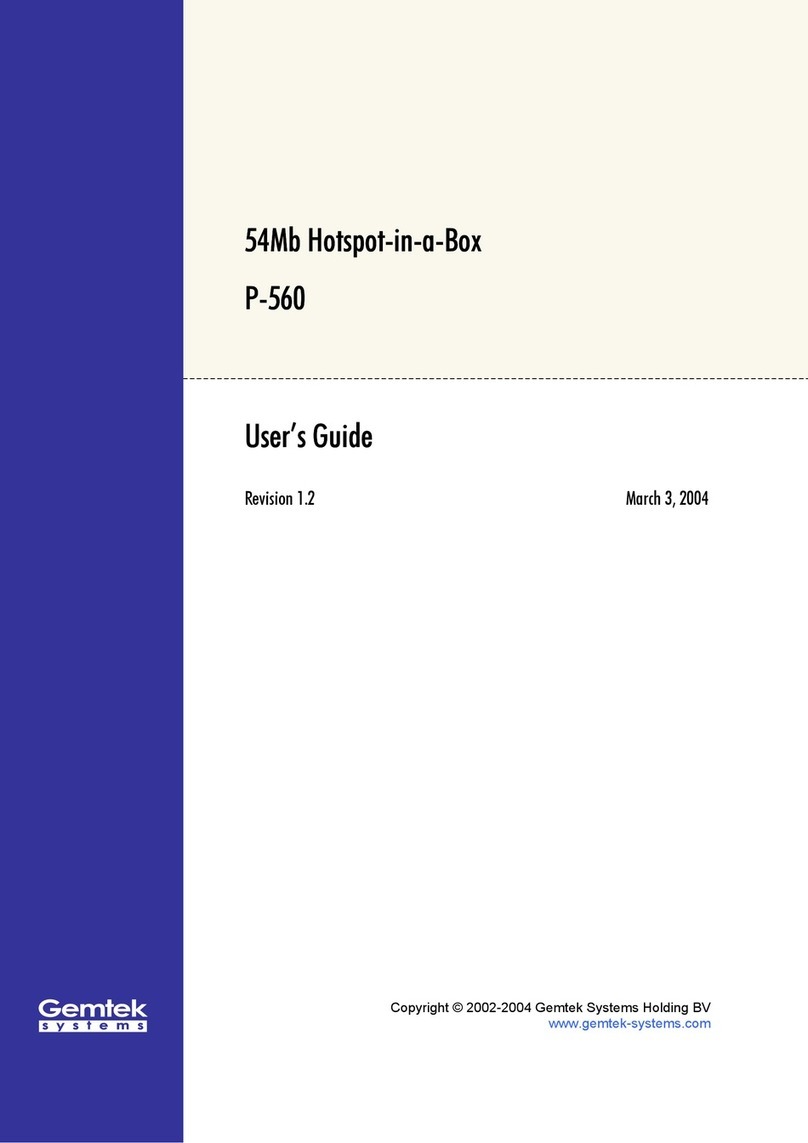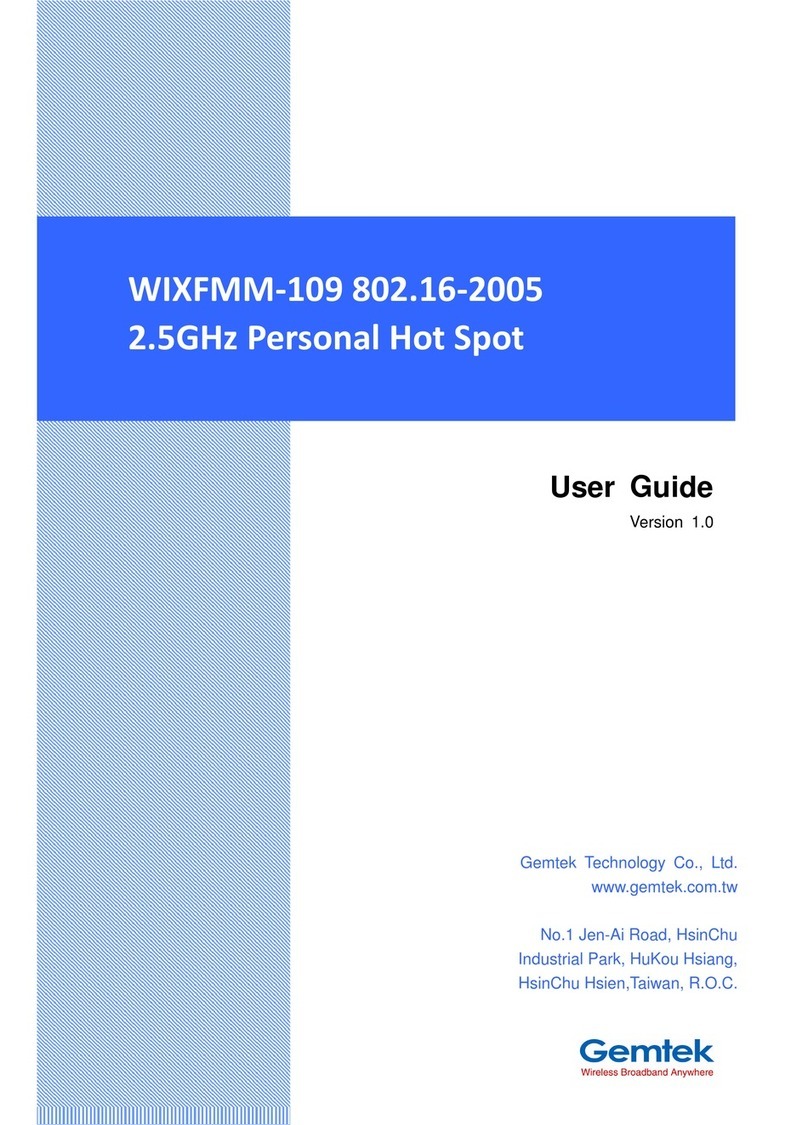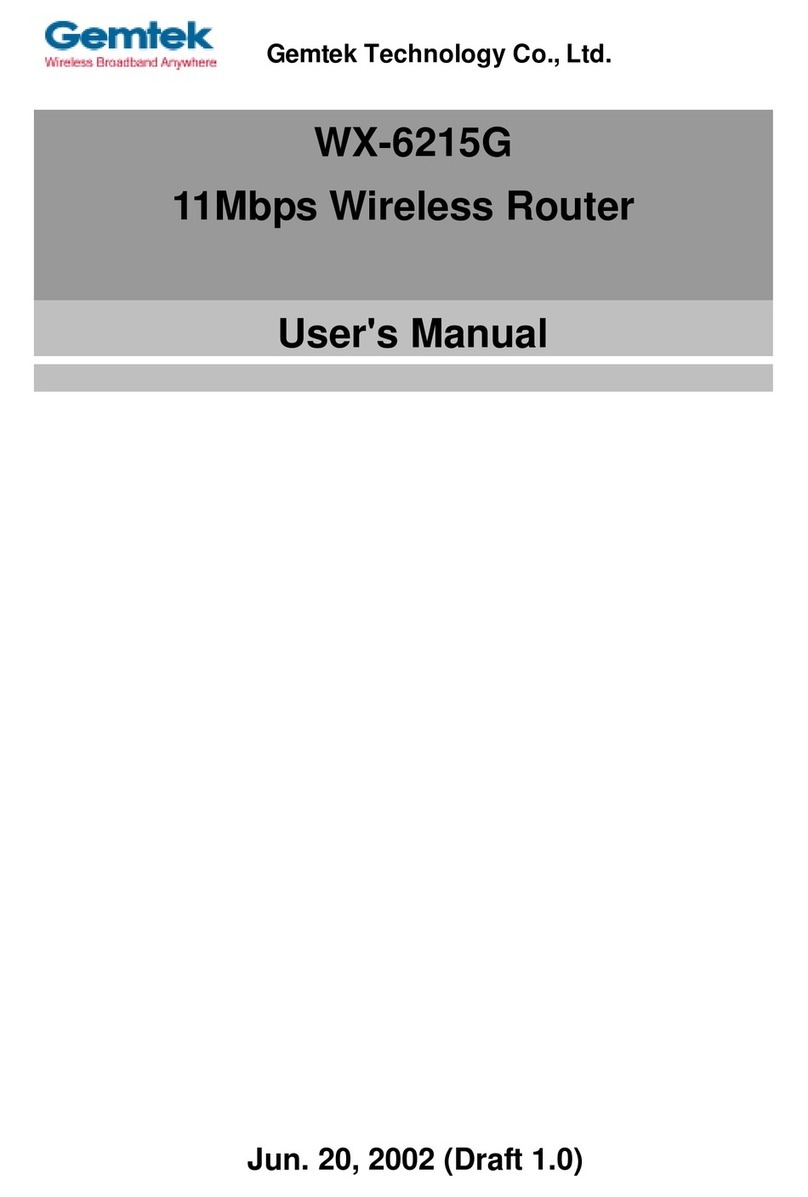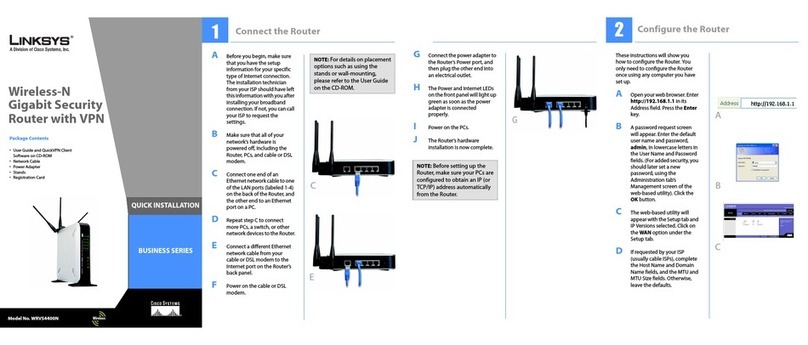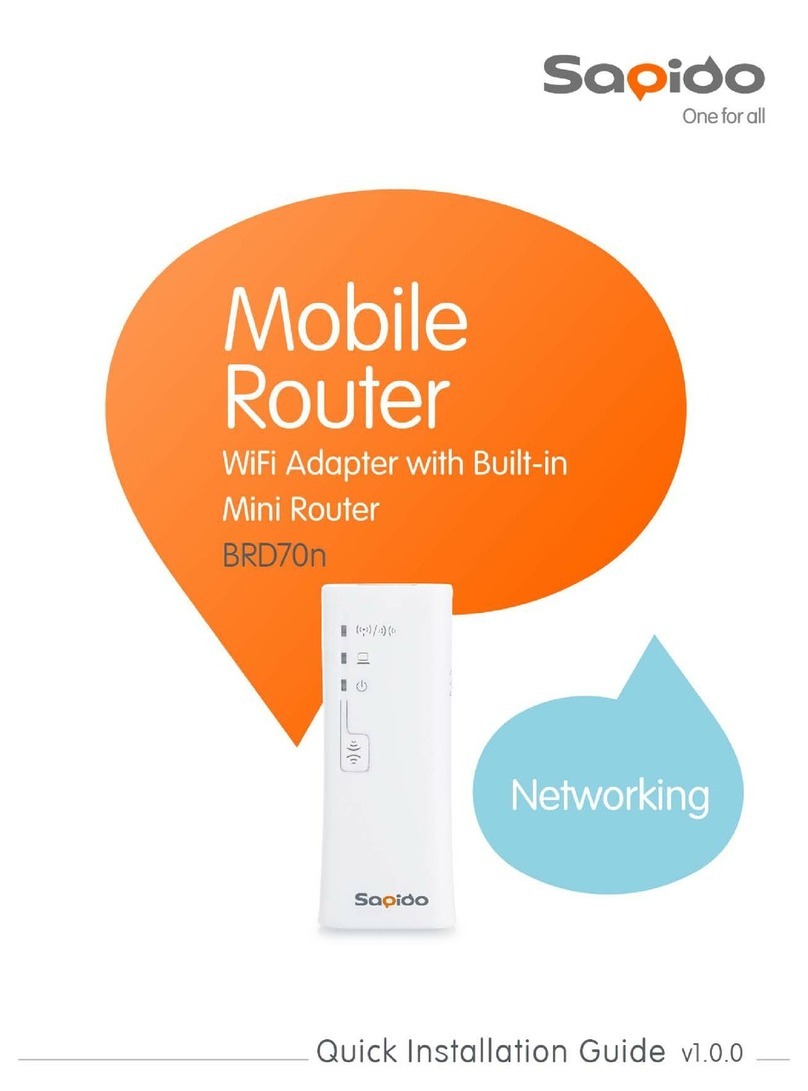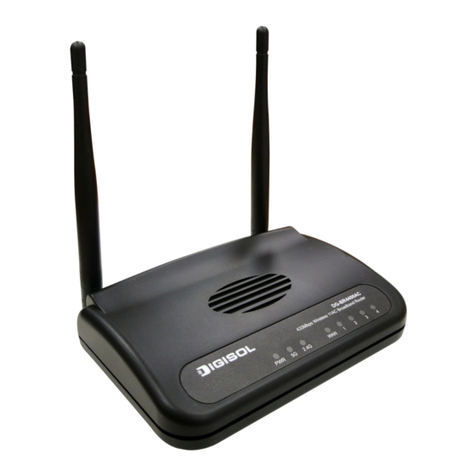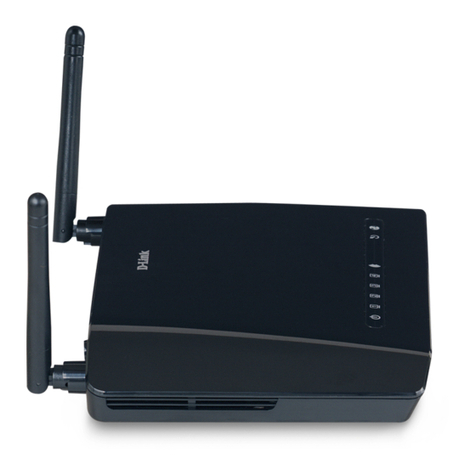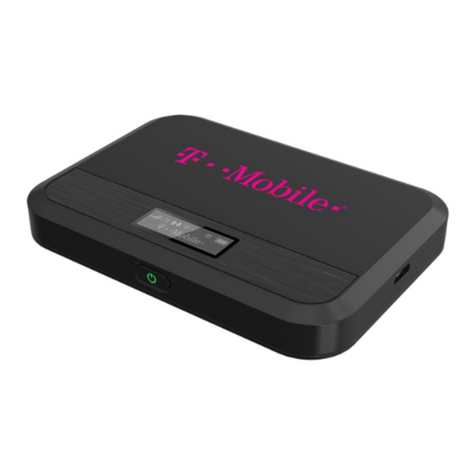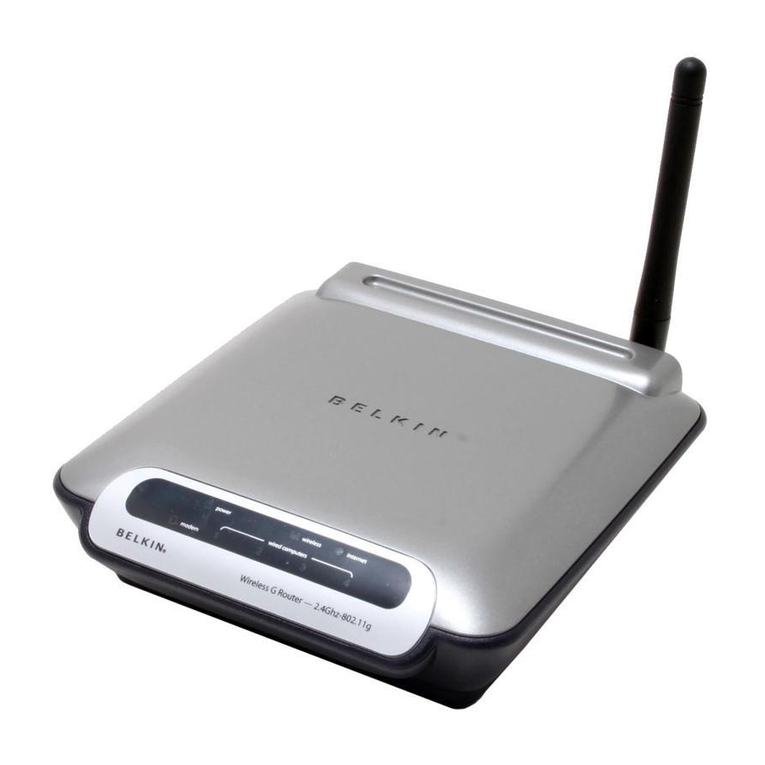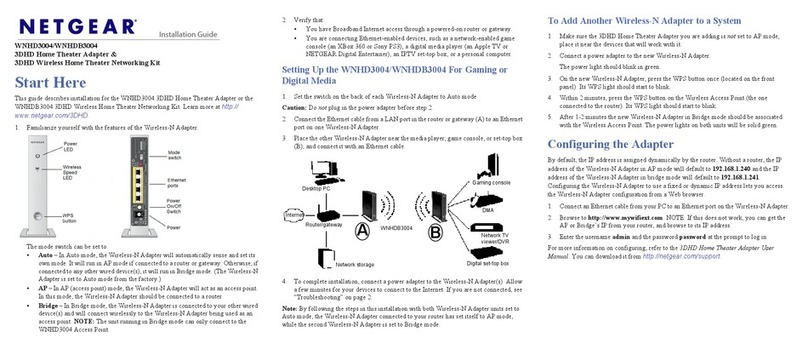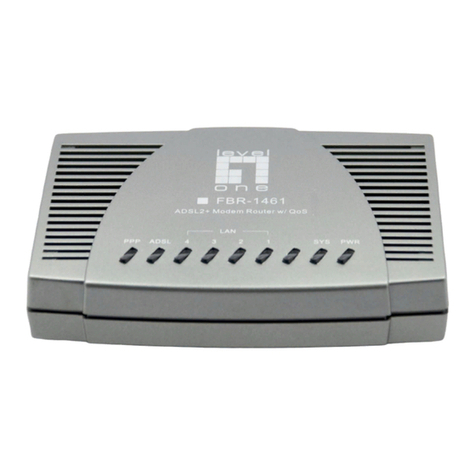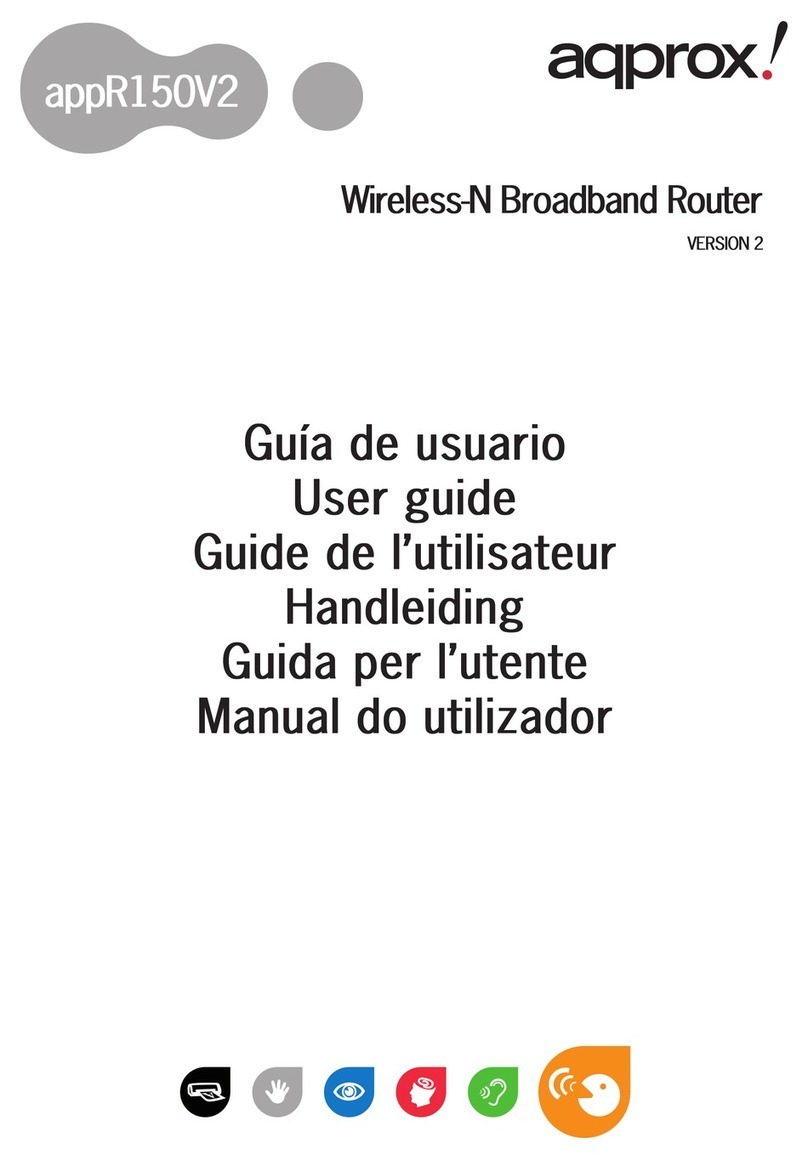Gemtek Systems T-316 User manual

Wi-Fi Ethernet Client
T-316
User’s Guide
Revision 1.2 February 18, 2003
Copyright © 2002, 2003 Gemtek Systems Holding BV
www.gemtek-systems.com

Gemtek Systems Page 3
Copyright
© 2002, 2003 Gemtek Systems Holding BV.
This user’s guide and the software described in it are copyrighted with all rights reserved. No part of
this publication may be reproduced, transmitted, transcribed, stored in a retrieval system, or translated
into any language in any form by any means without the written permission of Gemtek Systems
Holding BV.
Notice
Gemtek Systems reserves the right to change specifications without prior notice.
While the information in this manual has been compiled with great care, it may not be deemed an
assurance of product characteristics. Gemtek Systems shall be liable only to the degree specified in
the terms of sale and delivery.
The reproduction and distribution of the documentation and software supplied with this product and
the use of its contents is subject to written authorization from Gemtek Systems.
Trademarks
The product described in this book is a licensed product of Gemtek Systems Holding BV.

Gemtek Systems Page 4
Copyright...........................................................................................................................3
Notice ................................................................................................................................3
Trademarks........................................................................................................................3
CONTENTS ..........................................................................................................................4
ABOUT THIS GUIDE............................................................................................................5
Purpose.............................................................................................................................5
Prerequisite Skills and Knowledge.....................................................................................5
Conventions Used in this Document ..................................................................................5
Help Us to Provide Quality Documentation........................................................................5
Gemtek Systems Technical Support..................................................................................5
CHAPTER 1 – INTRODUCTION...........................................................................................6
CHAPTER 2 – WIRELESS LAN BASICS.............................................................................7
CHAPTER 3 – CONFIGURING THE WI-FI ETHERNET CLIENT .........................................8
3.1 Overview......................................................................................................................8
3.2 Connecting the Ethernet Client.....................................................................................9
3.3 Configuring the Network Connection ..........................................................................10
3.3.1 Information.........................................................................................................11
3.3.2 Wireless Configuration.......................................................................................12
3.3.3 Security (part of the Wireless page)...................................................................13
3.3.4 Server Configuration..........................................................................................14
3.3.5 Stations..............................................................................................................15
3.3.6 Administration....................................................................................................16
3.3.7 Help...................................................................................................................17
CHAPTER 4 – TROUBLESHOOTING................................................................................18
CHAPTER 5 – TECHNICAL SPECIFICATIONS.................................................................19
CHAPTER 6 – GLOSSARY................................................................................................20
Contents

Gemtek Systems Page 5
Purpose
This document provides general product information, technical specifications and simplified
installation and operational procedures of the E-810 Power-Over-Ethernet (PoE) 8-port Switch.
Prerequisite Skills and Knowledge
To use this document effectively, you should have a working knowledge of Local Area Networking
(LAN) concepts and wireless Internet access infrastructures. In addition, you should be familiar with
the following:
Hardware installers should have a working knowledge of basic electronics and mechanical
assembly, and should understand related local building codes.
Network administrators should have a solid understanding of software installation procedures for
network operating systems under Microsoft Windows 95, 98, Millennium, 2000, NT, and Windows
XP and general networking operations and troubleshooting knowledge.
Conventions Used in this Document
The following typographic conventions and symbols are used throughout this document:
Very important information. Failure to observe may result in damage.
Important information. Requires further user interaction.
Additional information. Helpful tips, but not required.
bold Menu commands. Buttons and input fields are displayed in bold
code File names, directory names, form names, and system-generated output
such as error messages are displayed in constant-width type
<value> Place holder for certain values, e.g. user inputs
Help Us to Provide Quality Documentation
If you should encounter any errors in this document or want to provide additional comments to
improve the manual please send e-mail directly to: manuals@gemtek-systems.com
Gemtek Systems Technical Support
Having problems, please visit our online technical support @ http://www.gemtek-systems.com.
The site offers:
The latest software, user documentation and product updates
Frequently Asked Questions (FAQ)
Direct contact to the Gemtek Systems support centers
About this Guide

T-316 User’s Guide
Gemtek Systems Page 6
Thank you for purchasing the Gemtek Systems Wi-Fi Ethernet Client. This manual will assist you with
the installation procedure.
The package you have received should contain the following items:
T-316 Wi-Fi Ethernet Client
Laptop display mounting clip
Dual purpose cable (USB and Ethernet)
User Guide
CD containing the User Guide
Note: if anything is missing, please contact your vendor
Figure 1.1 - T316 Wi-Fi Ethernet Client
Chapter 1 – Introduction

T-316 User’s Guide
Gemtek Systems Page 7
Wireless LAN (Local Area Networks) systems offer a great number of advantages over traditional,
wired systems. Wireless LANs (WLANs) are more flexible, easier to set up and manage and often
more cost effective than their wired equivalents. Using radio frequency (RF) technology, WLANs
transmit and receive data using only the air as a medium, minimizing the need for wired connections.
Thus, WLANs combine data connectivity with user mobility, and, through simplified configuration,
enable more mobile networks.
With wireless LANs, users can access shared information without looking for a place to plug in, and
network managers can set up or augment networks without installing or moving wires.
Wireless LANs offer the following productivity, convenience and cost advantages over traditional
wired networks:
Mobility
Wireless LAN systems can provide LAN users with access to real-time information anywhere within
their organization. This mobility supports productivity and service opportunities not possible with wired
networks.
Installation Speed and Simplicity
Installing a wireless LAN system can be fast and easy and eliminates the need to pull cables through
walls and ceilings.
Installation Flexibility
Wireless technology allows the network to go where wires cannot go.
Reduced Cost-of-Ownership
While the initial investment required for wireless LAN hardware might be higher than the cost of wired
LAN hardware, overall installation expenses and life-cycle costs will be significantly lower. Long-term
cost benefits are greatest in dynamic environments requiring frequent moves, additions, and changes.
Scalability
Wireless LAN systems can be configured in a variety of topologies to meet the needs of specific
applications and installations. Configurations are easily changed and range from peer-to-peer to full
infrastructure networks, and also allow roaming over a broad area.
Chapter 2 – Wireless LAN Basics

T-316 User’s Guide
Gemtek Systems Page 8
The following section will assist in installing the wireless LAN Adapter successfully. You will connect
the T-316 Ethernet Client to your system, then set the appropriate networking parameters. The
Gemtek Systems Ethernet Client eliminates the need to install drivers and for setting the network
properties. It looks to the system like a normal wired connection to an Ethernet network.
3.1 Overview
Here are the steps you will be required to perform to establish your wireless network connection:
•Install the Access Point. An AP is required for Infrastructure (BSS – Basic Service Set)
network mode.
•Connect the Ethernet Client (T-316).
•Set up the network connection, including WEP security.
Figure 3.1 – Network Application Scheme
Chapter 3 – Configuring the Wi-Fi Ethernet Client

T-316 User’s Guide
Gemtek Systems Page 9
3.2 Connecting the Ethernet Client
1. (Optional) Mount T-316 Wi-Fi Ethernet Client to your laptop display using the enclosed mounting
clip.
2. Insert the circular power and Ethernet plugs into the appropriate connectors on the T-316
3. Connect the power connector into a (powered) USB port.
4. Plug the Ethernet cable into the Ethernet connector (RJ45) on your system’s Ethernet port.
There are three LED indicators on the front of the T-316: Activity (ACT), Power (POWER) and Link
Status (LINK). The Power indicator should be on continuously (green), the Link Status (yellow) and
Activity (green) will blink indicating activity on the wired and wireless networks respectively.
Reset the T-316
If you press the reset button for more than four seconds, the Wireless Ethernet
Client will be reset to the default factory settings. All changes you made to the
configuration will be lost.
1. Insert the end of a paper clip into the hole next to the Ethernet connector to press the reset button,
and hold it for at least four seconds. LINK LED will blink during this process.
2. Release the reset button after the ACT LED goes off. All settings will be cleared and set to the
defaults. You can refer to this manual and reconfigure the Wireless Ethernet Client by yourself.

T-316 User’s Guide
Gemtek Systems Page 10
3.3 Configuring the Network Connection
The T-316 has a default IP Address of 192.168.5.99 with a subnet mask of 255.255.255.0.
The computer that you are using for initial configuration must have its IP Address set within
the same range, i.e., 192.168.5.xxx, where xxx is any number between 001 and 254,
excluding 099.
The Ethernet Client is a ready-to-use device. It is delivered with default settings that allow you to
access to it with any JavaScript-enabled web-browser such as Internet Explorer 4.0 (or higher), or
Netscape Navigator 4.0 (or higher). To get to the configuration and status information, enter into the
address line http://192.168.5.99, the default address of the Ethernet Client.
Figure 3.2 – Login window
Click OK. No User name or Password is required.
Factory Default Settings for the Wireless Ethernet Client
SSID Blank
Channel 6
Transmission rates Auto
WEP enable No
IP Address mode Static
IP Address 192.168.5.99
Subnet mask 255.255.255.0
User Name Blank
Administrator or password Blank (no password needed)

T-316 User’s Guide
Gemtek Systems Page 11
3.3.1 Information
The Information window displays the current setup status.
Figure 3.3 – Information page
Current Communications Quality
Indicates the measured Communications Quality of the Basic Service Set to which the station is
currently connected. The value in this field is based on signal and noise level measurements.
Firmware Revision
This indicates the device’s firmware version. This is important when updating the firmware or
reporting of any problems.
Current IP Address
Displays the device’s IP address.
Non-IP MAC Address
This is the MAC Address of the Ethernet port that bridges to the Ethernet Client.

T-316 User’s Guide
Gemtek Systems Page 12
3.3.2 Wireless Configuration
Selecting the Wireless tab brings this page.
Only the top section of the page is shown here. The rest is covered in the section on
Security.
Figure 3.4 – Wireless configuration page
Operating Mode (default=Infrastructure)
This is the default setting. Switch to Ad-Hoc mode when communicating to another client device
without the presence of Access Point.
SSID (default is blank)
The SSID (Service Set ID) is the name given to the wireless network that the T-316 is associated with.
Only Wireless Ethernet Clients and clients that share the same SSID are able to communicate with
each other.
You can leave this blank and then reboot it to scan the environment
You will see what AP available around you at Info page.
Channel (default=6)
This is the channel that the Wireless Ethernet Client uses to transmit and receive data. The channel
that you select here is restricted to the channels that can be used within your regulatory domain. It is
best to leave this set to Auto so the device can find the best channel to connect with. When operating
in Ad Hoc mode, this must be set to the same channel as all other devices in that network.
TX rate (default=Automatic)
The transmit rate identifies the preferred data transmission speed of the Ethernet Client.
Transmissions at higher rates allow for higher data throughput and quicker network response times.
However, transmissions at lower rates are usually more reliable and cover longer distances than the
higher rates.
Access Point Density (default=High)
When connecting to the Access Point, it is generally necessary to specify an Access Point Density.
This provides some control over handoff of clients during roaming between Access Points. Low,
Medium, or High can be selected.

T-316 User’s Guide
Gemtek Systems Page 13
3.3.3 Security (part of the Wireless page)
Figure 3.5 – Security page
WEP Enabled (default is unchecked)
Encryption (WEP)—additional measure of security on your wireless network which can be achieved
by using WEP (Wired Equivalent Privacy) encryption. When an encrypted frame is received it will only
be accepted if it decrypts correctly. This happens only if the receiver has the WEP Key used by the
transmitter. All devices on the network, and the Wireless Ethernet Client, must share the same WEP
selection – either Enable or Disable.
To enable WEP Encryption, click on WEP Enable.
WEP Key Length (default is 128-bit)
The WEP key is generated from Hexadecimal entries that are either 64 or 128-bit in length. (This is
also sometimes referred to as 40-bit or 104-bit encryption) When enabling encryption, select the Key
Length, either 64 or 128-bit, and then input the Hexadecimal digits. For 64 bit keys you must enter 10
hex digits into the key fields, for 128 bit keys you must enter 26 hex digits. If you leave the key field
blank this means a key of all zeros.
Only the following alphanumeric characters are allowed in the entry, which is 0 to 9,
a to f.
WEP Key to Use (default is Key 1)
Use the pull-down menu to select the WEP key. All devices on the network must use the same key to
communicate with one another.
Deny Unencrypted Data (default is unchecked)
For additional security when WEP is enabled, select Deny Unencrypted Data.
Data received without a WEP key is rejected when Deny Unencrypted Data is selected.
Shared Key Authentication (default is unchecked)
Shared Key Authentication is when both the sender and the recipient share a secret key. All points on
your network must use the same authentication type. It is recommended that you use the default
setting.

T-316 User’s Guide
Gemtek Systems Page 14
3.3.4 Server Configuration
Selecting the IP Addr tab brings this page.
Figure 3.6 – Server configuration page
Static (default=selected)
Select Static (recommended) to assign the IP, Subnet Mask and Gateway Address.
DHCP (default=not selected)
If the Wireless Ethernet Client is part of a network with a DHCP server, the DHCP server will assign
the IP settings to the Wireless Ethernet Client automatically. (This is not recommended because a
DHCP-assigned IP Address will change frequently, making the Wireless Ethernet Client impossible to
configure.)
Default IP address (default=192.168.5.99)
Default subnet mask (default=255.255.255.0)
Default gateway (default=192.168.5.1)
(Optional) Device Name (default is blank)
The device can be assigned a name for identification purposes within the network.
Allow Upgrade Uploads (default is unchecked)
Select this checkbox when performing firmware upgrade.
Cloning bridge (default is unchecked)
This function currently has limited applications.

T-316 User’s Guide
Gemtek Systems Page 15
3.3.5 Stations
Selecting the Stations tab brings this page. It shows the device that is bridging with the Ethernet
Client.
Figure 3.7 – Stations page

T-316 User’s Guide
Gemtek Systems Page 16
3.3.6 Administration
Selecting the Admin tab brings this page.
Figure 3.9 – Administration page
Change Username and Password (default is blank)
A password can be used to prevent unauthorized access to the configuration of the T-316. However,
should you choose to use a password, it must be 15 characters in length or less. Re-enter the
password in the next field to verify that it is correct, and click Change Password for the change to take
effect.
Reboot Bridge
Click Reboot to restart the Wireless Ethernet Client.
Reset to Factory Defaults
Click on Factory Reset to return all settings to the Factory Default values. (This can also be done by
pressing the Reset button on the back of the unit.)

T-316 User’s Guide
Gemtek Systems Page 17
3.3.7 Help
This is reserved for future use.
Figure 3.10 – Help page

T-316 User’s Guide
Gemtek Systems Page 18
Because the T-316 requires no driver installation, it is less problematic than devices that do. Using
the three LED indicators, most problems can be isolated very easily.
POWER LED (Power)
-Must be on. If it is not on:
Check to see that the USB cable is securely plugged into a USB port; and
Make certain that it is a powered USB port
-If it is not on, and the cable is plugged into a powered USB port:
The cable may be defective, or
The T-316 is faulty.
LINK LED (Wired network activity)
-Should be on or blinking. If it is off:
Check to see that the Ethernet cable is securely plugged into an Ethernet port on the
computer
Check to see that the indicator LEDs associated with the Ethernet port are on or blinking
-If the connection appears to be correct:
The cable may be defective; or
The settings of the Ethernet port should be checked
ACT LED (RF link activity)
-Should be on or blinking. If it is off:
Check to see that the Access Point the T-316 is associating with is working and within
range (300’ maximum with no obstructions)
Check the settings of the T-316 to see that it is capable of associating with the AP
•DHCP client must be enabled unless the network administrator states otherwise
•WEP settings must be the same as those for the AP (disabled or identical keys)
Chapter 4 – Troubleshooting

T-316 User’s Guide
Gemtek Systems Page 19
T-316 Technical Specification
Standards supported
IEEE 802.11 standard for Wireless LAN
All major networking standards (including IP, IPX)
Environmental Operating temperature (ambient): -10 ~ 50°C
Humidity: Max. 95% Non-condensing
Power specifications DC power supply
- Input : DC 100-240 50-60 Hz 2A
- Output: 5V DC 2A converter incl.
Radio specifications
Range:
- per cell indoors approx. 35-75 meters
- per cell outdoors up to 100-250 meters
Transmit power:
- Nominal Temp Range: 15 dBm, 12min.
Frequency range:
- 2.4-2.4835 GHz, direct sequence spread spectrum
Number of Channels:
- Most European countries: 13 (1-13)
- US and Canada: 11 (1-11) (3 non-overlapping)
- France: 4 (10-13) (1 non-overlapping)
- Japan : 14 (1-14)
Specific features
Supported bit rates:
- 11 Mbps : CCK
- 5.5 Mbps : CCK
- 1 Mbps : DBSK
- 2 Mbps : DQPSK
Data encryption
64-bits WEP Encryption
128-bits WEP Encryption
Utility Management
Web management and TFTP firmware upgrade
Chapter 5 – Technical Specifications

T-316 User’s Guide
Gemtek Systems Page 20
802.11:802.11 is a family of specifications for wireless local area networks (WLANs) developed by a
working group of the Institute of Electrical and Electronics Engineers (IEEE). The original specification
provides for an Ethernet Media Access Controller (MAC) and several physical layer (PHY) options,
the most popular of which uses GFSK modulation at 2.4GHz, enabling data rates of 1 or 2Mbps.
Since its inception, two major PHY enhancements have been adopted and become “industry
standards”. 802.11b adds CCK modulation enabling data rates of up to 11Mbps, and 802.11a
specifies OFDM modulation in frequency bands in the 5 to 6GHz range, and enables data rates up to
54Mbps.
Authentication:The process of establishing the identity of another unit (client, user, device) prior to
exchanging sensitive information.
DHCP:Dynamic Host Configuration Protocol (DHCP) is a communications protocol that lets network
administrators manage centrally and automate the assignment of Internet Protocol (IP) addresses in
an organization's network. Using the Internet Protocol, each machine that can connect to the Internet
needs a unique IP address. When an organization sets up its computer users with a connection to the
Internet, an IP address must be assigned to each machine. Without DHCP, the IP address must be
entered manually at each computer and, if computers move to another location in another part of the
network, a new IP address must be entered. DHCP lets a network administrator supervise and
distribute IP addresses from a central point and automatically sends a new IP address when a
computer is plugged into a different place in the network.
DNS:Domain Name Service. An Internet service that translates a domain name such as gemtek-
systems.com to an IP address, in the form xx.xx.xx.xx, where xx is an 8 bit hex number.
Gateway:A gateway is a network point that acts as an entrance to another network. On the Internet,
a node or stopping point can be either a gateway node or a host (end-point) node. Both the
computers of Internet users and the computers that serve pages to users are host nodes. The
computers that control traffic within your company's network or at your local Internet service provider
(ISP) are gateway nodes.
Hot-spot:A hot-spot is wireless public access system that allows subscribers to be connected to a
wireless network in order to access the Internet or other devices, such as printers. Hot-spots are
created by WLAN access points, installed in public venues. Common locations for public access are
hotels, airport lounges, railway stations or coffee shops.
HTTPS:HTTPS (Hypertext Transfer Protocol over Secure Socket Layer, or HTTP over SSL) is a Web
protocol developed by Netscape and built into its browser that encrypts and decrypts user page
requests as well as the pages that are returned by the Web server. HTTPS is really just the use of
Netscape's Secure Socket Layer (SSL) as a sublayer under its regular HTTP application layering.
ICMP:ICMP (Internet Control Message Protocol) is a message control and error-reporting protocol
between a host server and a gateway to the Internet. ICMP uses Internet Protocol (IP) datagrams, but
the messages are processed by the IP software and are not directly apparent to the application user.
IEEE:Institute of Electrical and Electronics Engineers. The IEEE describes itself as the world’s largest
professional society. The IEEE fosters the development of standards that often become national and
international standards, such as 802.11.
Chapter 6 – Glossary

T-316 User’s Guide
Gemtek Systems Page 21
IP:The Internet Protocol (IP) is the method or protocol by which data is sent from one computer to
another on the Internet. Each computer (known as a host) on the Internet has at least one IP address
that uniquely identifies it from all other computers on the Internet. When you send or receive data (for
example, an e-mail note or a Web page), the message gets divided into little chunks called packets.
Each of these packets contains both the sender's Internet address and the receiver's address. Any
packet is sent first to a gateway computer that understands a small part of the Internet. The gateway
computer reads the destination address and forwards the packet to an adjacent gateway that in turn
reads the destination address and so forth across the Internet until one gateway recognizes the
packet as belonging to a computer within its immediate neighborhood or domain. That gateway then
forwards the packet directly to the computer whose address is specified.
ISP:An ISP (Internet Service Provider) is a company that provides individuals and other companies
access to the Internet and other related services such as Web site building and virtual hosting. An ISP
has the equipment and the telecommunication line access required to have a point-of-presence on
the Internet for the geographic area served.
LAN:A local area network (LAN) is a group of computers and associated devices that share a
common communications line and typically share the resources of a single processor or server within
a small geographic area (for example, within an office building). Usually, the server has applications
and data storage that are shared in common by multiple computer users. A local area network may
serve as few as two or three users (for example, in a home network) or many as thousands of users
(for example, in an FDDI network).
MAC:Medium Access Control. In a WLAN network card, the MAC is the radio controller protocol. It
corresponds to the ISO Network Model's level 2 Data Link layer. The IEEE 802.11 standard specifies
the MAC protocol for medium sharing, packet formatting and addressing, and error detection.
NAT:NAT (Network Address Translation) is the translation of an Internet Protocol address (IP
address) used within one network to a different IP address known within another network. One
network is designated the inside network and the other is the outside. Typically, a company maps its
local inside network addresses to one or more global outside IP addresses and unmaps the global IP
addresses on incoming packets back into local IP addresses.
NAT is included as part of a router and is often part of a corporate firewall.
POP3:POP3 (Post Office Protocol 3) is the most recent version of a standard protocol for receiving e-
mail. POP3 is a client/server protocol in which e-mail is received and held for you by your Internet
server. Periodically, you (or your client e-mail receiver) check your mail-box on the server and
download any mail. POP3 is built into the Netmanage suite of Internet products and one of the most
popular e-mail products, Eudora. It's also built into the Netscape and Microsoft Internet Explorer
browsers.
RADIUS:RADIUS (Remote Authentication Dial-In User Service) is a client/server protocol and
software that enables remote access servers to communicate with a central server to authenticate
dial-in users and authorize their access to the requested system or service. RADIUS allows a
company to maintain user profiles in a central database that all remote servers can share. It provides
better security, allowing a company to set up a policy that can be applied at a single administered
network point. Having a central service also means that it's easier to track usage for billing and for
keeping network statistics.
SNMP:Simple Network Management Protocol (SNMP) is the protocol governing network
management and the monitoring of network devices and their functions. It is not necessarily limited to
TCP/IP networks.
Other manuals for T-316
1
Table of contents
Other Gemtek Systems Wireless Router manuals
Popular Wireless Router manuals by other brands
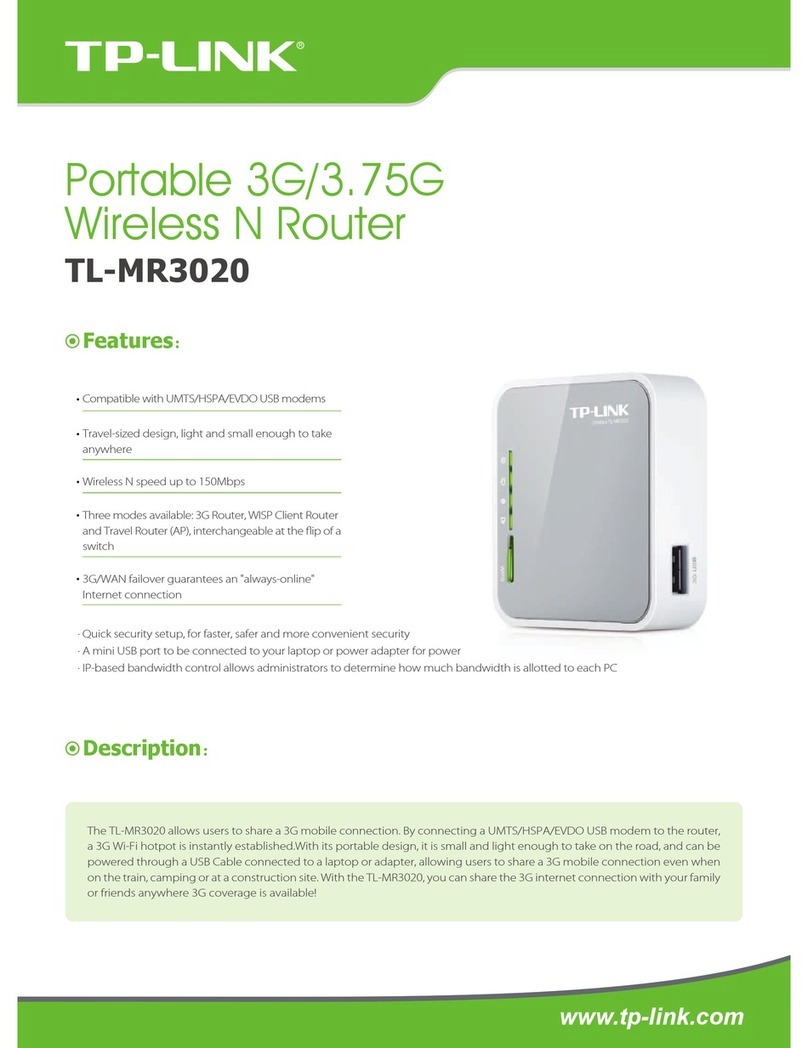
TP-Link
TP-Link TL-MR3020 Specifications

Raymarine
Raymarine Base Station Installation and commissioning
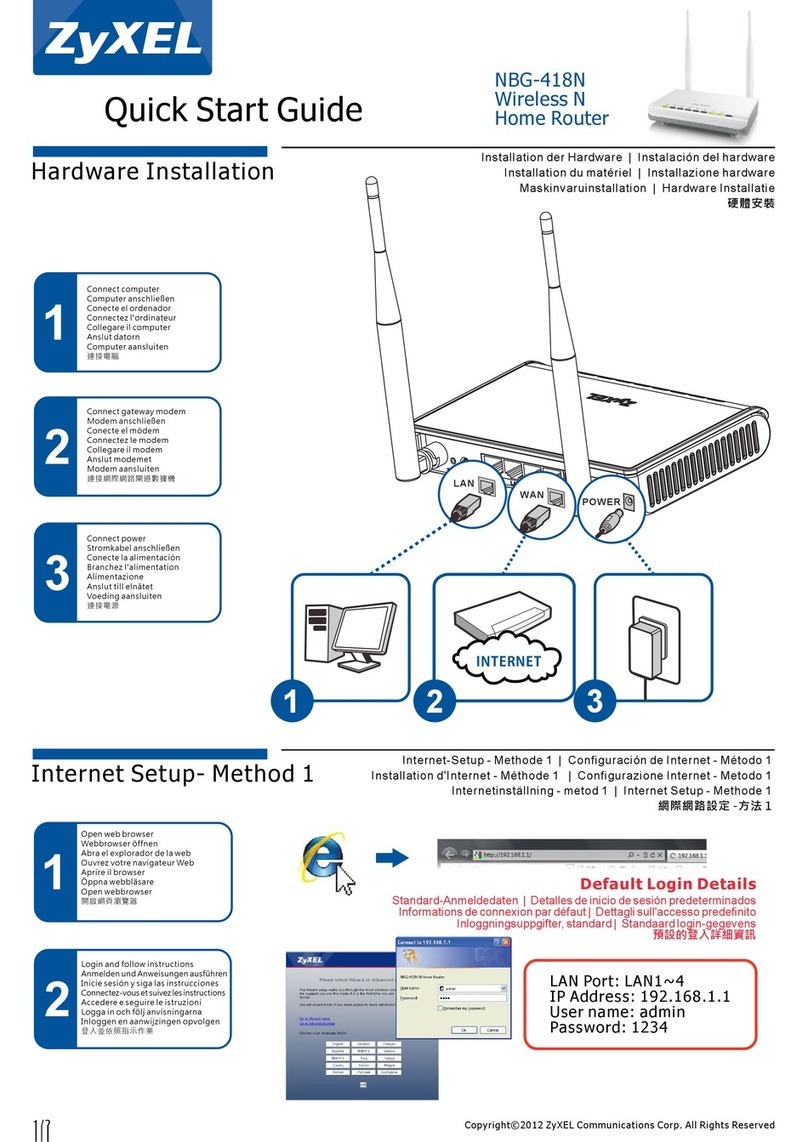
ZyXEL Communications
ZyXEL Communications NBG-418N quick start guide

NETGEAR
NETGEAR ProSAFE WC7500 Installation
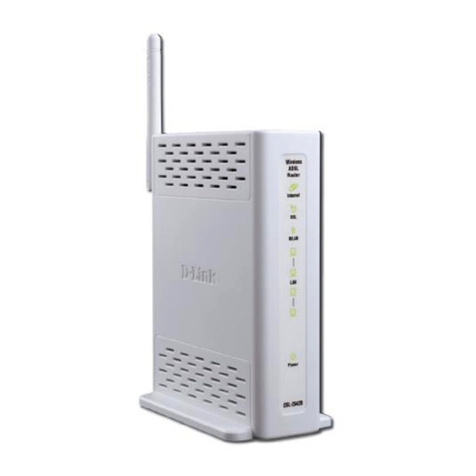
D-Link
D-Link DSL-2642B HOW TO UPDATE FIRMWARE
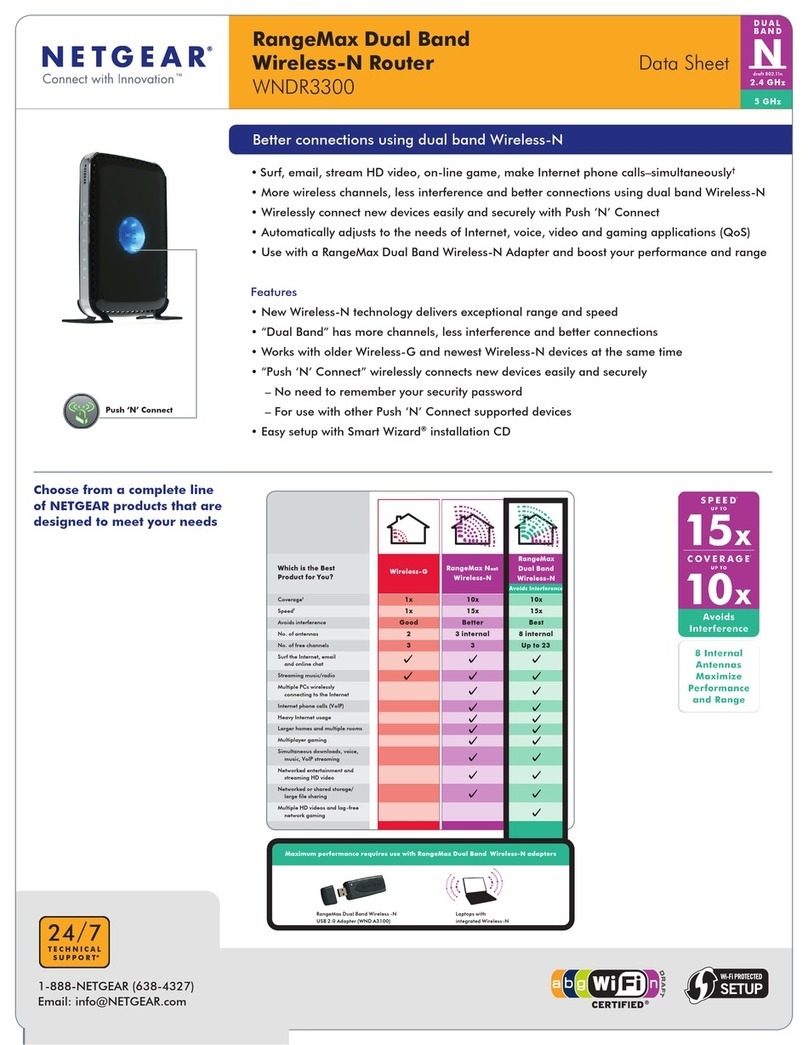
NETGEAR
NETGEAR WNDR3300v1 - RangeMax Dual Band Wireless-N... datasheet
